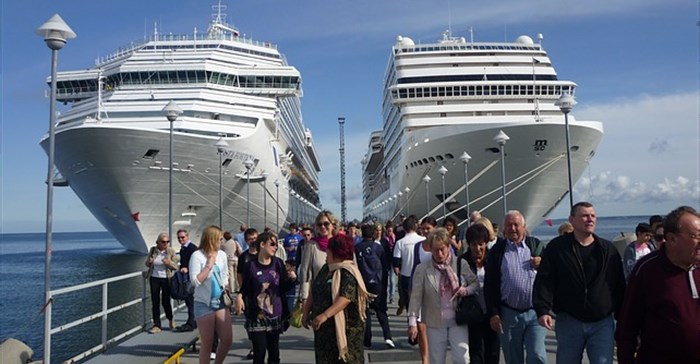
Top stories


EducationFrom adversity to opportunity: African education’s revival strategies
Sanjeev Mansotra 16 hours



Marketing & MediaThe Odd Number named Financial Mail AdFocus Mid-Sized Agency of the Year
The Odd Number 20 hours

More news













Things are looking positive
While growth was reported in all major markets, China in particular, had showed "incredible" growth in the last quarter of last year and in January, Tourism Minister Derek Hanekom said in a briefing to Parliament's tourism committee.
He said the fall in the value of the rand, the relaxation of the visa regulations, and the elimination of the Ebola outbreak in Western Africa had contributed to the strong resurgence in tourist numbers.
The ability of Chinese travellers to apply for their visas through accredited travel companies under the revised visa regulations had made a huge difference, Hanekom said. "Things are really looking positive for a good year for tourism in 2016," Mr Hanekom said.
He was optimistic that South African Tourism's growth forecast of 2% for tourist arrivals over the 2016-17 reporting period would be exceeded. Over the 2015-16 reporting period, the number of tourist arrivals declined 6.8% from the previous period.
Serious difficulties had been experienced in India in obtaining and processing visas from the Department of Home Affairs. Hanekom has just returned from a trip to India and China and said the problem had been raised repeatedly by Indian travel companies, which were confident about the potential to grow the market of tourists to SA if these obstacles were overcome.
"The issue needs serious attention," Hanekom said. He said Cabinet's decision to allow business people from Brics (Brazil, Russia, India and China) countries to get a multiple-entry visa valid for 10 years was slowly being implemented.
Frequent visitors from India also qualify for a three-year multiple-entry visa. Once the system was fully operational it would ease the load on the Home Affairs Department. Home Affairs Minister Malusi Gigaba recently announced Russian tourists would be exempt from visa requirements. Cabinet has also instructed the department to look into issuing visas on arrival in SA if travellers had valid visas to enter the US, Britain, or Europe. This was on the basis that these countries and regions applied stringent visa processing checks SA could rely on. Hanekom said no decision had been taken on this.
During its presentation to the committee, South African Tourism executives noted the organisation, which has operations in about 13 international markets, had suffered currency losses of R350m in the past five years due to the depreciation of the rand. This had reduced its marketing budget substantially. To deal with the problem, it had reprioritised its operations through the adoption of a hub model. This involved one office dealing with a region, instead of just one country.
Hanekom endorsed the hub model but also raised the importance of SA having tourism presence in Indonesia, the Philippines and Malaysia, which could offer large numbers of tourists to SA. In selected markets the use of tourism attachés in embassy offices should be considered.
The minister noted that cruise tourism was often dismissed by the local tourism industry as not offering benefits in terms of accommodation, but pointed out that cruise tourists spent a lot on their stopovers and had a high rate of return visits.
Source: Business Day

For more than two decades, I-Net Bridge has been one of South Africa’s preferred electronic providers of innovative solutions, data of the highest calibre, reliable platforms and excellent supporting systems. Our products include workstations, web applications and data feeds packaged with in-depth news and powerful analytical tools empowering clients to make meaningful decisions.
We pride ourselves on our wide variety of in-house skills, encompassing multiple platforms and applications. These skills enable us to not only function as a first class facility, but also design, implement and support all our client needs at a level that confirms I-Net Bridge a leader in its field.
Go to: http://www.inet.co.za